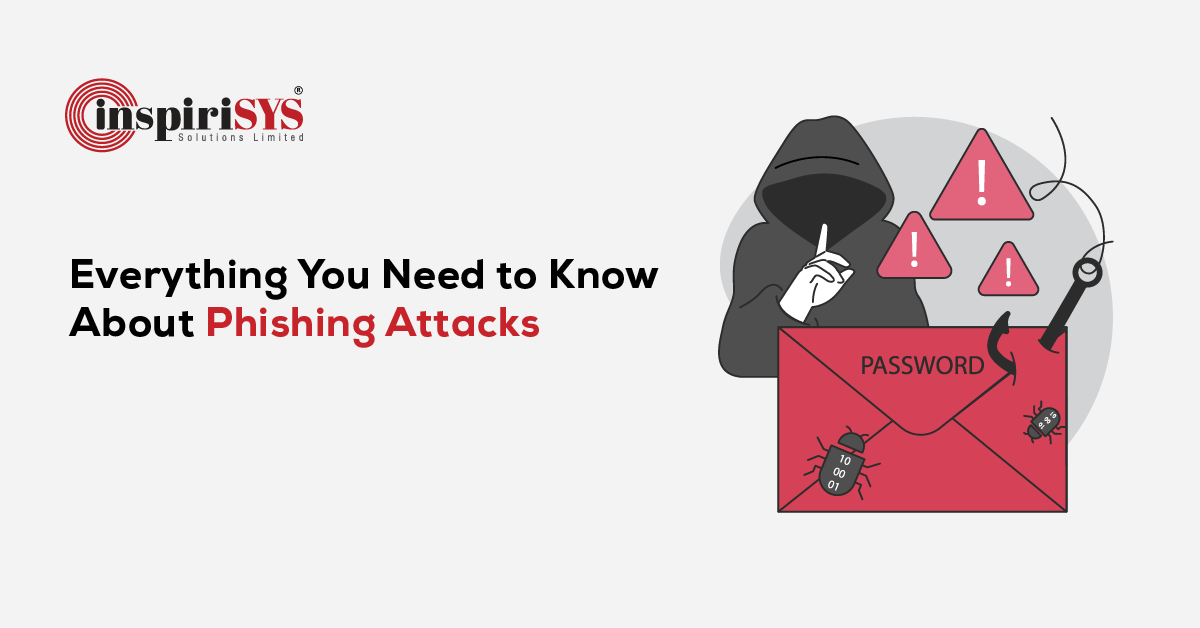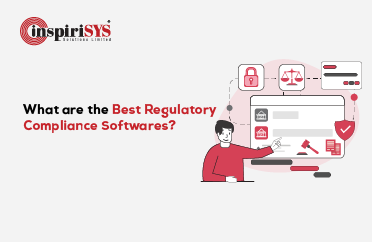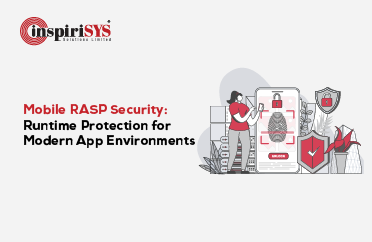Quick Summary: Phishing continues to be a major cyber threat, using deception to steal data and infiltrate systems. From emails to phone calls, attackers exploit trust in different ways. Key sectors like finance, retail, and technology are often targeted, with global brands regularly impersonated. By combining user awareness with strong security measures, organizations can minimize risks and defend against these attacks.
Phishing attacks are particularly dangerous because of its adaptability and psychological manipulation. With cybercriminals aiming to exploit trust and access sensitive information, understanding what phishing is and how it impacts businesses has never been more important. This article explores its meaning, major types, prevention strategies, and real-world examples to help you stay prepared.
What is Phishing?
A phishing attack is a type of social engineering tactic used by cybercriminals to trick individuals into revealing sensitive information, such as login credentials, financial data, or granting unauthorized access to systems. Instead of directly breaching security measures, attackers rely on manipulating human behavior through deceptive emails, fake websites, malicious attachments, or even phone calls (vishing).
Before launching an attack, threat actors often analyze an organization’s digital footprint to gather details about its employees, vendors, and internal processes. Using this information, they create carefully designed or targeted phishing campaigns that may impersonate trusted entities or individuals to build credibility. These attacks frequently focus on individuals with privileged access to business applications, payment systems, or confidential records, increasing the risk of identity theft, online fraud, and large-scale data breaches.
How Does a Phishing Attack Work?
While the intent behind a phishing attack may differ, whether stealing credentials, financial data, or breaching business systems, the process typically follows a structured sequence. Each stage is carefully planned to maximize success and bypass security defenses.
1. Identifying the Target
Cybercriminals begin by selecting their intended victims, which could range from a single individual to an entire organization. They analyze available digital footprints, business roles, and online activity to determine who holds access to valuable data, financial systems, or confidential records. Opportunistic attackers may aim for a broader audience, while more sophisticated campaigns linked to cyber-espionage focus on high-value individuals with privileged access.
2. Setting Up a Fake Front
To make the attack look authentic, threat actors register domains or create URLs resembling legitimate platforms. Slight variations like replacing characters or using URL shorteners help disguise malicious intent. This step adds credibility to phishing emails and landing pages, making it harder for users and security filters to detect fraudulent activity.
3. Designing the Phishing Campaign
At this stage, invaders craft deceptive messages designed to appear genuine and trustworthy. These may mimic official communications from banks, payment gateways, cloud platforms, or even company executives. Using Open-Source Intelligence (OSINT), they personalize these messages with relevant details, which increases the chances of user interaction.
4. Deploying the Trap
Once the fake email or SMS is ready, adverseries set up phishing pages or embed harmful files to lure users into revealing sensitive information. These files often appear as everyday documents, such as PDFs, spreadsheets, or invoices, making them harder to identify as threats. In some cases, malware is delivered through seemingly trusted platforms like cloud storage links, which further enhances the illusion of authenticity.
5. Exploiting the Breach
After the user clicks a link or enters their credentials, attackers gain access to accounts, networks, or business applications. Depending on their objective, they may sell stolen login credentials on underground forums, deploy ransomware or other destructive payloads, extract financial data, customer records, or intellectual property, and in some cases, use compromised systems to build botnets or launch Distributed Denial-of-Service (DDoS) attacks.
Types of Phishing Attacks
From large-scale email scams to highly targeted impersonation attempts, phishing attacks take multiple forms designed to compromise critical business data and disrupt operations. Knowing these variations is key to improving security awareness and prevention.
Mass email phishing
Attackers send high-volume emails that mimic banks, ecommerce platforms, or popular apps, aiming to catch a small percentage of recipients who click without scrutiny. These texts often borrow branding, spoof sender addresses, and use urgent subjects to push a quick action such as updating a profile or reviewing an invoice. Campaigns are frequently timed around busy seasons or public events when attention is divided.
Spear phishing
Targets are a specific person or small group, usually those with access to sensitive data or the authority to approve payments. Adversaries study public sources and the organization’s digital footprint to tailor messages that reference real projects, colleagues, or vendors. The added context makes the request feel routine, which raises the chance of a reply or a click. When senior leaders are targeted, the same approach is commonly called whaling.
Smishing
Delivers the lure through text messages. Prompts might mention delivery updates, account verification, or a limited-time offer, then direct the user to a fraudulent site or request card details. Short links and urgent wording are typical signals. Since texts feel personal and immediate, people often respond faster than they would to email, which makes smishing effective.
Vishing
Uses phone calls or voice messages. Attackers rely on caller ID spoofing and scripted pressure tactics, claiming problems with taxes, card processing, or account access. The goal is to keep the person on the line, move them past verification checks, and capture sensitive information or payments. Cheap VoIP services make large-scale, automated calling easy, which fuels this method.
Social media phishing
Here the platform itself becomes the channel. Adversaries send direct messages through services such as LinkedIn, X, or messaging apps, pretending to be coworkers, partners, or support teams. A common social engineering tactic involves sending fake logins, contest links, or job offers that lead to malicious portals. The account takeover on one platform often triggers a cascade effect across other accounts, where a passwords are reused.
How to Prevent Phishing Attacks?
Preventing phishing requires a focused strategy that combines clear policies, user awareness, and the right security measures. The following methods outline effective ways to safeguard accounts, data, and systems from potential attacks.
1. Build Security Awareness Across the Organization
Train employees to identify phishing attempts by recognizing red flags such as suspicious links, fake sender addresses, and urgent requests. Encourage them to report harmful-looking emails or messages immediately to the IT or security team, ensuring faster response and mitigation.
2. Establish Strong Organizational Policies
Define clear policies that limit opportunities for phishing. Prohibit financial approvals or data-sharing requests through email unless verified through secure channels. Instruct employees to manually enter URLs instead of clicking on links and verify any sensitive requests by calling the requester directly using known contact details.
3. Use Advanced Email Security Tools
Implement spam filters and email security solutions that detect dangerous content using AI-driven algorithms. These tools automatically flag or isolate questionable emails, preventing them from reaching users and reducing the chances of accidental clicks.
4. Enable Multifactor Authentication (MFA)
Strengthen account security by requiring multiple verification steps, such as a one-time passcode or biometric scan, in addition to passwords. Even if credentials are compromised, MFA significantly reduces the likelihood of unauthorized account access.
5. Deploy Endpoint Protection Solutions
Use Endpoint Detection and Response (EDR) or Unified Endpoint Management (UEM) tools that leverage AI analytics to detect phishing-related threats. These tools identify unusual activity and block malware before it spreads across devices and networks.
6. Implement Web Filtering and Monitoring
Integrate web filtering tools to restrict access to known malicious domains and warn users when they attempt to visit suspicious pages. This additional safeguard helps mitigate damage if someone accidentally clicks on a phishing link.
7. Adopt Enterprise-Level Cybersecurity Platforms
Consider enterprise-grade solutions like Security Orchestration, Automation, and Response (SOAR) and Security Information and Event Management (SIEM) platforms. These systems combine AI-driven detection and automated response capabilities to swiftly contain phishing-related threats and prevent system compromise.
Industries Most Vulnerable to Phishing Attacks
Certain industries face a higher risk due to the nature of the data, accounts, and financial details they manage. Identifying these sectors helps organizations anticipate potential threats and adopt stronger security measures.
- eCommerce and Retail: Online platforms processing personal and payment details are frequent targets, often through fake order confirmations and promotional emails.
- Social Media Platforms: Attackers impersonate trusted profiles or send malicious links through messaging features to compromise accounts.
- Banking and Financial Institutions: Phishing emails often create urgency around account security or investment updates to extract login credentials.
- Payment Systems: Merchant card processors and digital payment services are attacked to gain access to transaction-related data.
- Technology Sector: Tech companies are targeted to exploit software vulnerabilities and access sensitive enterprise accounts.
- Telecommunications: Scammers focus on employee credentials to gain unauthorized entry into large customer databases.
- Logistics and Shipping: Fake delivery updates and package notifications are used to gather personal information or payment details.
- Healthcare: Systems storing patient records and insurance information are targeted using deceptive requests and fake portals.
- Travel and Hospitality: Fraudulent booking sites and loyalty program scams are used to steal account access and payment information.
Most Impersonated Brands in Phishing Campaigns
Cybercriminals often exploit brand trust by creating emails, websites, and messages that closely resemble legitimate communications. This tactic increases the chances of recipients engaging with destructive links or sharing account details. Recognizing these commonly targeted brands can help users identify potential threats early.
- Microsoft
- Apple
- Alibaba
- Amazon
- Adobe
Well-established technology providers, social media platforms, and eCommerce brands dominate the target list for phishing campaigns due to their extensive user bases and access to critical account information. During peak shopping seasons, attackers also impersonate retail brands like Nike, Adidas, and Lululemon, using fake promotions and discount offers to trick customers into sharing personal and payment details.
Recent Trends in Phishing Attacks
Phishing techniques continue to advance as intruders adopt new tools and strategies to bypass traditional security measures. Understanding these emerging trends is essential for detecting sophisticated threats early and strengthening overall defenses.
AI-Powered Phishing
With the rise of generative AI, cybercriminals can now create highly personalized phishing emails and text messages that appear authentic and error-free. Unlike conventional phishing attempts, these messages lack the usual warning signs, making them harder to identify. AI also enables scammers to launch large-scale campaigns faster, producing hundreds of targeted messages within minutes. In some cases, AI-generated images and voice synthesis are used to convincingly impersonate executives or trusted individuals.
Quishing (QR Code-Based Phishing)
Quishing involves embedding malicious QR codes in emails, text messages, or public places to redirect users to fraudulent websites. Once scanned, these codes can lead victims to fake login pages or trigger malware downloads, compromising accounts and payment details without raising suspicion.
Hybrid Vishing
This technique blends voice phishing with other communication methods to build trust and avoid detection. For instance, a victim may receive an email claiming to be from a trusted organization, directing them to call a specific number for verification. When they call, the attacker uses social engineering to extract confidential information or authorize financial transactions.
Conclusion
Phishing attacks remain a serious threat with potentially devastating consequences. Attackers often succeed by impersonating trusted sources and exploiting the human tendency to act quickly or rely on familiarity, allowing them to bypass even advanced security measures.
As these tactics evolve, the human element continues to be the most critical vulnerability. Safeguarding business data, customer accounts, and core systems demands a balanced strategy that unites advanced security technologies, continuous employee awareness, and real-time threat detection. With a proactive and adaptive approach, organizations can build stronger defenses and stay resilient against one of today’s most persistent cyber risks.
Frequently Asked Questions
1. How does phishing differ from pretexting?
Phishing uses deceptive messages, often urgent in tone, to trick victims into sharing data or clicking malicious links. Pretexting relies on fabricated scenarios where the attacker impersonates someone trusted to gain direct access to information.
2. What are the seven red flags of phishing?
Common warning signs include urgent language, unusual requests, grammatical errors, mismatched email addresses, suspicious links, an unfamiliar tone, and direct demands for account or payment details.
3. Where do most phishing attacks come from?
They usually originate from spoofed domains, compromised accounts, or fraudulent websites. Increasingly, attackers also exploit social media and messaging platforms to distribute phishing attempts.
4. Can phishing lead to ransomware attacks?
Yes. Phishing emails are one of the most common delivery methods for ransomware. A single click on a malicious attachment or link can allow attackers to install malware, encrypt files, and demand ransom payments to restore access.
5. How can multi-factor authentication (MFA) help against phishing?
Even if threat actors manage to steal usernames and passwords, MFA adds an extra layer of protection. Requiring an additional step such as a one-time passcode, security token, or biometric verification, makes it far more difficult for them to gain full access to accounts.







